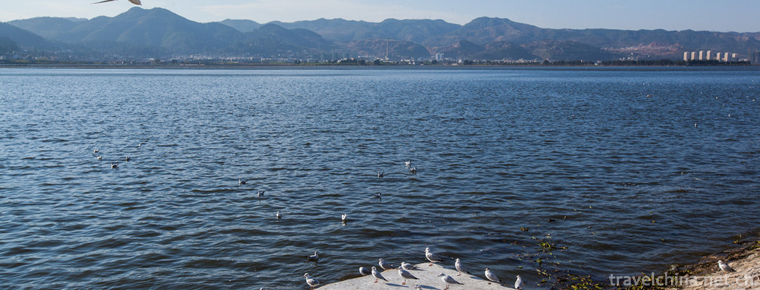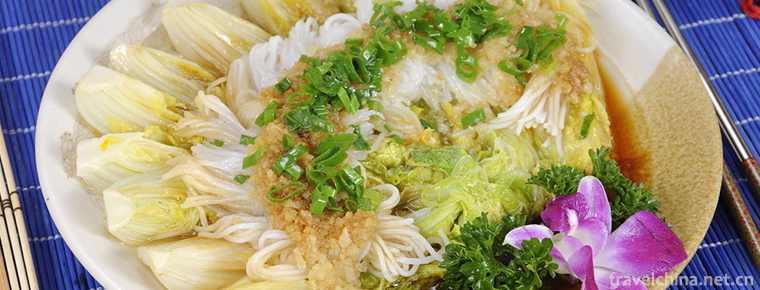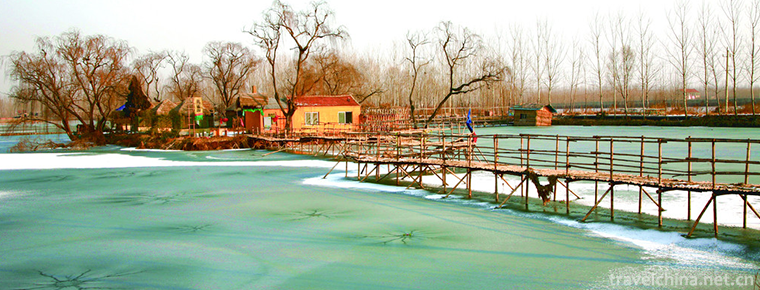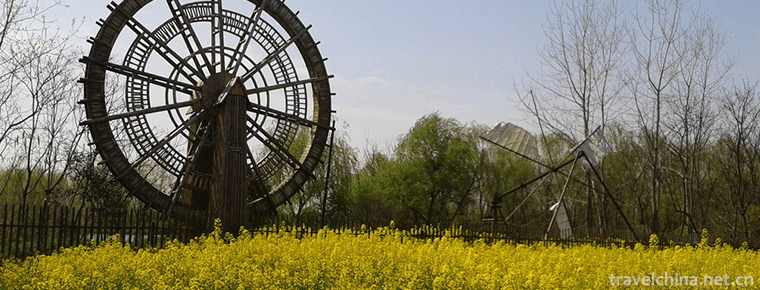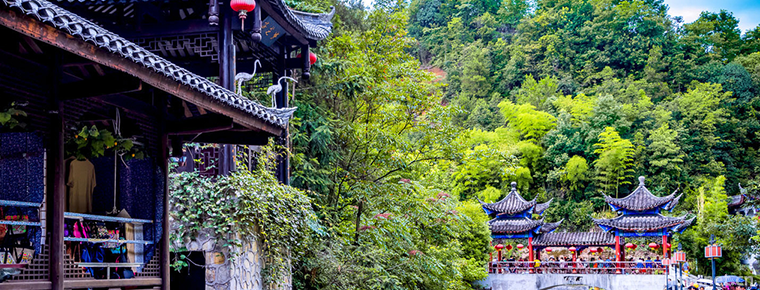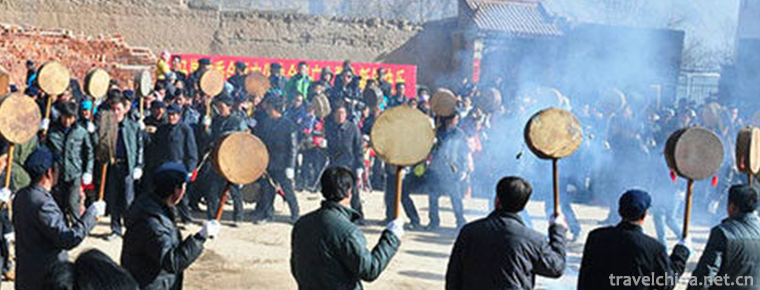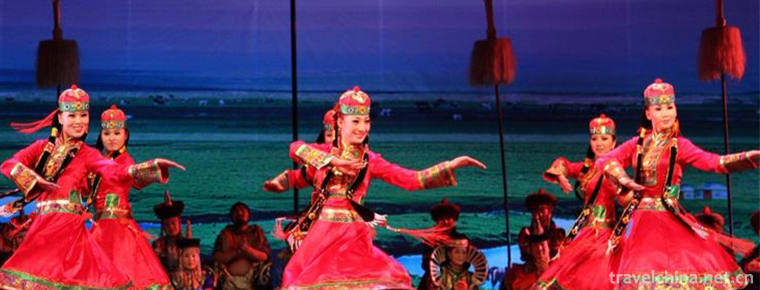Xijiashan Folk House
Xijiashan Folk House
Xijiashan Residence, a national key cultural relic protection unit and national AAAA-level tourist attraction, is located in Xijiashan Town, Jiang'an County, Yibin City, Sichuan Province. It was built in the 40th year of Wanli in Ming Dynasty (AD 1612). It was expanded and completed in Qing Dynasty. It is a typical feudal landlord manor in southern Sichuan. It is the product and material evidence of self-sufficiency of feudal natural economy. Its long history and good preservation are extremely rare in southern Sichuan and even in the whole country.
The architectural development history of Xijiashan folk house is a social and custom history of Sichuan folk since the end of Ming Dynasty. Xijiashan folk house is known as "living fossil of Chinese folk architecture" and "essence of Shenzhou folk architecture", which is of great value to the study of Chinese folk architecture history, folk art history, folk custom history and social history of southern Sichuan.
There are a large number of Zhennan around the dwellings, and there are tens of thousands of national second-class protected animals, egrets and sparrows, forming a rare "natural egret park" in China.
Protection of cultural relics
Xijiashan folk residence is a rare artistic essence which combines the history of Chinese folk architecture, folk art, folk custom and social history of southern Sichuan.
In 1988, with the approval of the provincial, municipal and county editorial committees, the Xijiashan Folklore Museum in Sichuan Province was established, and a folk exhibition with rich contents reflecting the customs of Han nationality in southern Sichuan was opened. In 1996, it was approved by the State Council as the "State Key Cultural Relics Protection Unit". In 2006, it was assessed as a national AAAA-level tourist attraction.
Travel information
Wedding performance
The performance of marriage custom in Xijiashan ancient folk house shows an important part of the Han nationality custom in South Sichuan, namely the wedding celebration. The whole performance includes "lift a sedan chair", "return a horse", "worship a hall" and "enter a cave". The atmosphere is lively, the scene is grand, the festival is solemn, quite interesting, entertaining and participatory.
Natural Heron Park
The Heron storks (also known as white cranes, the second-class protected birds) gathered in the lush Zhennan forest of Xijiashan folk residence have a large number of people and a concentrated area. This miracle and spectacle has a history of more than 200 years. There are still more than 7,000 egrets living and multiplying here all the year round, which has become a rare landscape in the world. Therefore, CCTV has filmed a special TV film here. China's One Wonderful. Xijiashan residential area is also known as "natural heron park".
Tourism season
Yibin City is a humid monsoon climate area in Central Asia and has the climate attribute of South Asia tropics. There are plenty of heat in the four seasons, and the frost-free period is 347 days. The average annual temperature is 17.9 C. The best time to go to Xijiashan Residence is June-October.
Scenic food
Lizhuang white meat, Nanxi tofu dried, Yibin burning noodles, Yibin broken rice sprouts, Wuliangye series liquor, sprouts and bamboo shoots; black tea; chicken shredded tofu brain; Longxu egg noodles; Pingshan set vinegar; Yibin plate duck; Baixi Chao Cake and so on.
Traffic survey
Bus: You can take a bus or a ship from Yibin to Jiang'an County on the Yangtze River, and then change to a bus. It takes about 40 minutes to drive Jiashan Mountain from Jiang'an to Xi'an.
Self-driving: Jiang'an County Government 1. From the starting point to the west, drive 210 meters, straight 2. Drive 10 meters, turn left into the middle section of Zhudu Avenue 3. Drive 400 meters along the middle section of Zhudu Avenue, turn right into Xuefu Road 4. Drive 170 meters along Xuefu Road, turn right into S308 5, drive 400 meters along S308 5, turn left into Nanzheng Street 6. Drive 390 meters along Nanzheng Street and straight into North Zhengjie Street 7. Drive 280 metres along Beizheng Street, turn left into Binjiang Road 8. Drive 40 metres along Binjiang Road, and reach the end point (on the right side of the road) Xijiashan Residence.
Shopping Directory
Shopping summary: Yibin is located at the junction of Sichuan, Guizhou and Yunnan provinces. It is the junction of Sichuan Basin and Yunnan-Guizhou Plateau. Minjiang River and Jinshajiang River converge here to form the Yangtze River. Such geographical features and distribution of water system have contributed to Yibin's rich products. The famous commodities made from these products are Yibin black tea, Jinsi beef, Xufu sprouts, Wuliangye, etc.
Bamboo technology
Since the Ming Dynasty, with its rugged, simple and exquisite artistic features, it has won the gold medal at Panama International Expo in 1919. Up to now, it has seven kinds of midday craft products: bamboo spring, bamboo chopsticks, bamboo tube, bamboo root carving, bamboo knitting, bamboo furniture and bamboo architecture. The bamboo spring, which is made from the inner wall of Nanbamboo tube, is yellow in color. It is used for inlaying, carving, making jewelry boxes, papermaking and other handicraft products. It is elegant and luxurious, and is known as "bamboo ivory". Bamboo chopsticks, with hollow carved lion head chopsticks as the top crafts, contain treasures, empty flowers, treasure collection, single and double lions and dozens of other products, are sold at home and abroad.
Bamboo tube is made of concave bamboo and bamboo with human face as raw materials. It is divided into empty, ancient carving, leather carving, Yang carving, Yin carving and other categories. It carves dragon and phoenix, characters, landscapes and so on. It is cherished and collected by people.
Bamboo root carving uses abandoned bamboo root to turn waste into treasure. With its special shape, bamboo root carving carves longevity stars, Arhats, ladies and birds and animals, which are popular with tourists.
Pictures From: http://bbs.fengniao.com/forum/2385978.html








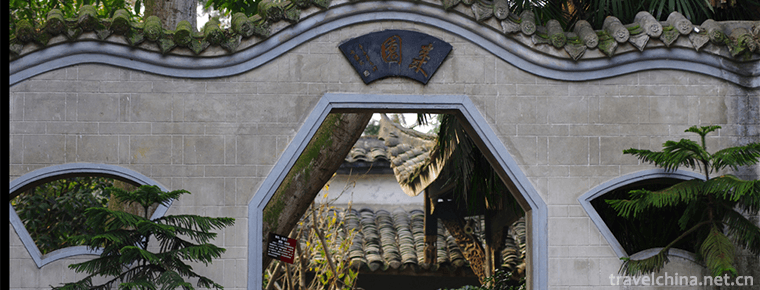
-
Dianchi Lake
Dianchi, also known as Kunming lake, Kunming pool, Yunnan Nan Ze....
Views: 182 Time 2018-10-21 -
Vegetable party
Vegetable party (alias Su Chunjuan) is one of the common local traditional snacks in Guiyang. It can be seen almost everywhere in the streets of Guiyang. This dish is crisp.
Views: 175 Time 2018-11-05 -
Jining Beihu Tourist Resort
Jining is the world-famous town of Confucius and Mencius and the capital of the canal. Located 6 kilometers south of Jining City, Shandong Province, Beihu Lake is a new tourist attraction in Shandong.
Views: 208 Time 2019-01-21 -
Qinhu National Wetland Park
Qinhu National Wetland Park is located between the central part of Jiangsu Province and the Yangtze and Huaihe River. The total area of the scenic spot is 26 square kilometers..
Views: 146 Time 2019-02-07 -
Waterwheel Garden
On August 26, 2005, Lanzhou, known as the "Water Vehicle Capital", built a Water Vehicle Expo Park, which reproduced the spectacular scene of water vehicles on both sides of the Yellow River.
Views: 216 Time 2019-02-08 -
Tangya Tusi City Site
Tangya Tusi Town Site is located in Tangya Town, Xianfeng County, Enshi Tujia and Miao Autonomous Prefecture, Hubei Province, with its back to Xuanwu Mountain and facing Tangya River..
Views: 153 Time 2019-02-13 -
Badang dance
Badang Dance is a kind of ancient folk dance, which originated from the ancient Qiang people's "Temple Festival" in Dingxi Minxian, southeastern Gansu Province. It is also a sacrificial ritu.
Views: 189 Time 2019-04-02 -
Bai opera
After 1949, on the basis of blowing tunes, Bai folk opera "Dabenqu" tunes were further enriched and improved, renamed "Baiju". The Lyric forms are basically sung in Bai language an.
Views: 196 Time 2019-04-03 -
Mongolian Sawurden
Mongolian Sawurden, Xinjiang Uygur Autonomous Region and Jingxian traditional dance, one of the national intangible cultural heritage..
Views: 200 Time 2019-06-04 -
Erwang Temple
The Erwangmiao ancient building complex is located at the foot of Yulei mountain outside the west gate of today's Dujiangyan, which is an important part of the world cultural heritage Dujiangyan. The temple was built in memory of Li Bing and his son Erlang. The Erwang temple was first built in the northern and Southern Dynasties.
Views: 439 Time 2020-11-08 -
The position of Panzhihua
Panzhihua City is located at the junction of Sichuan and Yunnan in Southwest China, 26 ° 05 ′ - 27 ° 21 ′ N and 101 ° 08 ′ - 102 ° 15 ′ E. Jinsha River and Yalong River meet here. It borders Huili, Dechang and Yanyuan counties of Liangshan Yi Autonomous Prefecture.
Views: 364 Time 2020-12-14 -
Population of Dazhou
By the end of 2019, the registered residence population of Dazhou was 6 million 589 thousand and 400, with a permanent population of 5 million 741 thousand, and the urbanization rate of permanent residents was 47.14%. The annual death rate was 46.
Views: 357 Time 2020-12-20
